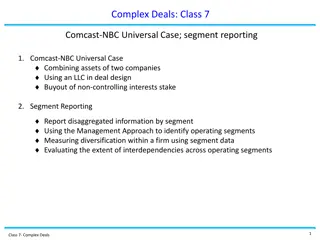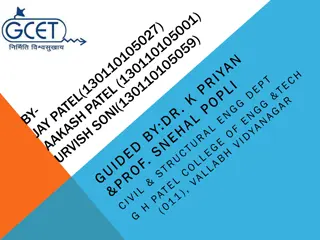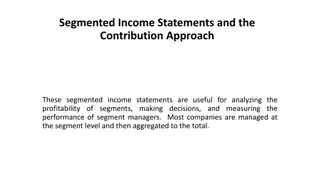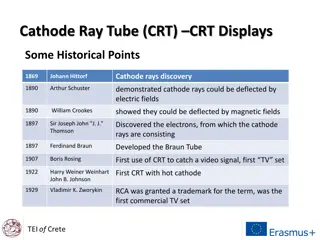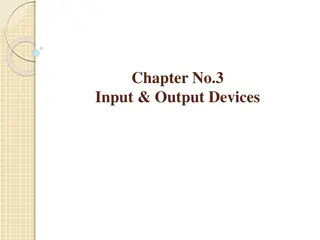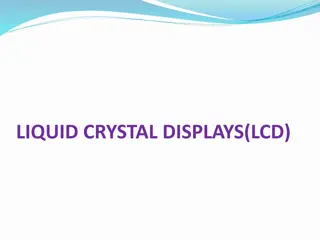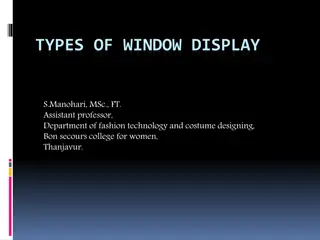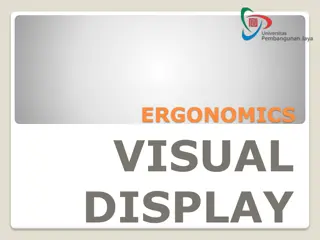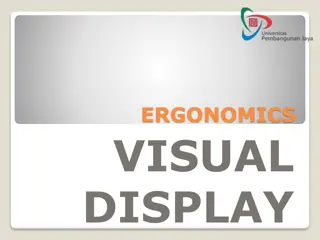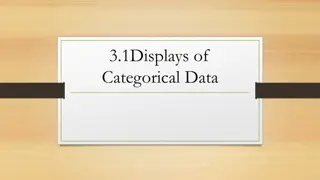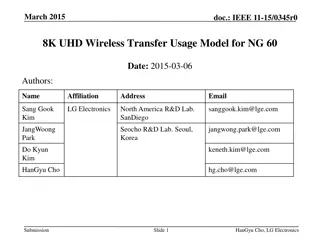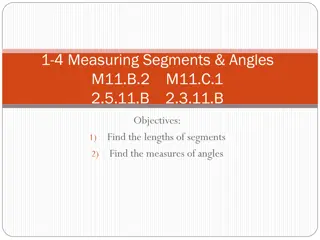7-Segment Displays for Beginners
Appreciate the use of 7-segment displays, which consist of 7 LEDs and a separate LED for the decimal point. Learn about common cathode and common anode displays, connections, displaying numbers, and showcasing hexadecimal values on these displays. Gain insights on how to illuminate specific segments to display numbers and letters effectively.
Download Presentation

Please find below an Image/Link to download the presentation.
The content on the website is provided AS IS for your information and personal use only. It may not be sold, licensed, or shared on other websites without obtaining consent from the author.If you encounter any issues during the download, it is possible that the publisher has removed the file from their server.
You are allowed to download the files provided on this website for personal or commercial use, subject to the condition that they are used lawfully. All files are the property of their respective owners.
The content on the website is provided AS IS for your information and personal use only. It may not be sold, licensed, or shared on other websites without obtaining consent from the author.
E N D
Presentation Transcript
7 Segment Displays AIM: To appreciate how to use a 7 Segment Display PRIOR KNOWLEDGE: Diodes, Resistors www.pfnicholls.com
Introduction The 7 segment display is an arrangement of 7 LEDs and a separate LED for the decimal place. The display can form the digits 0-9 to display decimal numbers and can also form the letters A-F allowing Hexadecimal to be displayed.
Introduction 7 Segment displays come in different sizes and colours and have different forward bias voltages depending on how many LEDs make up each segment. There are two types of display available - common cathode and common anode. The number "SC52" on the 7 segment display shown means it is a common Cathode display.
Connections The LEDs in a 7 Segment Display usually need a series resistor. 7 Segment Displays are usually used with some form of counter and may need a decoder so that the correct segments are illuminated for each corresponding number, letter or symbol. The diagram shows the connections for a typical 7 segment display
Common Cathode Displays In a Common Cathode 7 Segment Display the cathodes of all eight LEDs are connected to a common pin which should be connected to 0 V. Each separate segment of the display should have its own series resistor. Each segment is made HIGH to illuminate the display. The display driver must be able to source current to the LEDs.
Common Anode Displays In a 'Common Anode' 7 Segment Display, all eight anodes are connected to a common pin which is connected to the positive supply. Each segment is connected separately to 0 V (made LOW) using a series resistor to illuminate the display. The display driver must be able to sink current from the LEDs.
Displaying Numbers The truth tables show how each number is formed by illuminating the appropriate segments. The 1 is right justified and the 6 and 9 do not have tails.
Displaying Hexadecimal Hexadecimal is a number system that uses the numbers 0 to 9 and the letter A to F to give 16 different values. Hexadecimal can be displayed on a 7 Segment Display BUT the 6 (and 9 for consistency) must have tails so that the letter "b" can be displayed and distinguished from a "6". The letters are displayed as A b C d E F.
Displaying Letters Upper Case Common letters, in addition to those used for Hexadecimal, can be either upper or lower case. Other letters can be displayed with a 7 Segment Display such as "y" and "n" which is useful for Yes / No (y/n). Some letters are identical to numbers and so have to be used appropriately.
Summary A 7 Segment display is a series of LEDs arranged to make letters and numbers There are 8 LEDs including the decimal point A display decoder is usually used to convert binary (for example) into the correct outputs for the display Common cathode displays have a common cathode connected to ground and each segment is made HIGH Common anode displays have a common anode connected to positive and each segment is made LOW Each LED needs a series resistor Numbers, some upper case letters and some upper case letters can be displayed
Questions 1. How many LEDs are in a 7 segment display? 2. How many connections does a 7 segment display have? 3. Which numbers can be confused with letters? 4. Why are series resistors needed?
Answers 1. 8 including the decimal place 2. 9, these being the 8 LEDs and the common pin 3. 1 confused with lower case l 6 confused with lower case b if the tails are not used 9 confused with lower case g if the tails are used 0 confused with upper case O 4. To limit the current. The segments of the display are just normal LEDs and need to be used in the same way





